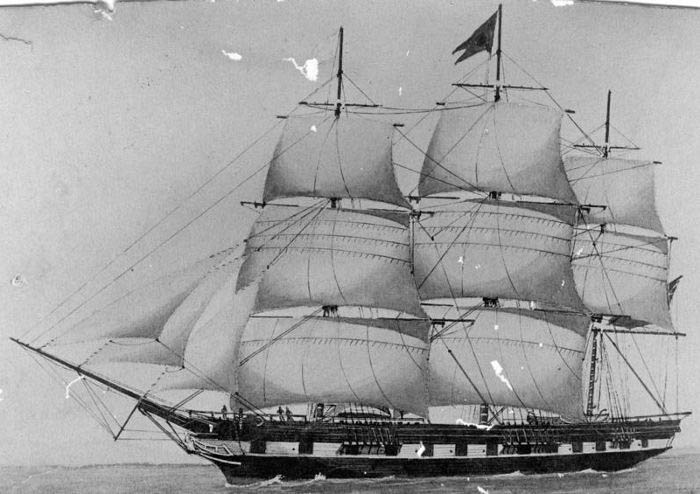Launched in 1851 in Saint John, New Brunswick, the Marco Polowas a 3-masted clipper ship. As she slid into the sea at James Smith shipyard on Courtney Bay, her keel stuck in a mudflat and her hull fell over on its side. Six days later with much effort and the help of a good high tide she was refloated upright. Her birth was further complicated as she very soon grounded again in the shallow waters of Marsh Creek. After two weeks stuck in the mud she was floated free and fitted with rigging.

As was common with ships built in New Brunswick it was intended to sell the Marco Polo after her maiden voyage across the Atlantic. The investors in the building of the clipper ship not only made money on selling her in England but also made a considerable profit by loading her up with New Brunswick timber that found a ready market in Britain.
The timber-laden Marco Polo sailed from Saint John to Liverpool in 15 days. She was bought by the Black Ball Line to add to its fleet of clippers transporting passengers from Liverpool to Australia. On her first voyage out she made the passage in 76 days. Anchored in port in Australia for 3 weeks she was loaded up and sailed back to Liverpool making passage again in 76 days. The roundtrip set a record as being the first to be achieved in under 6 months.
The fastest clipper ship in the world, the Marco Polo made several voyages to Australia delivering a healthy profit to the Black Ball Line. On a voyage in 1861 she hit an iceberg off Cape Horn. The damage was repaired in Valparaiso, Chile and even with this stopover the Marco Polo managed to make the passage from Melbourne, Australia to Liverpool in a respectable 183 days.
It was speculated that the extraordinary speed of the sailing ship Marco Polo was due to some twisting of its keel when it suffered two groundings on launching in Saint John. Whatever the reason for its speed, whether it was the bent keel, the design of its hull or the design of its rigging and sails, the fame of the clipper ship spread far and wide.
The residents of Saint John today maintain their pride in the skills of the shipbuilders of yesteryear. The ship, named after the famous medieval Italian merchant-traveler Marco Polo, is commemorated as one of the highlights in the history of Saint John.
After its service on the Australian run, the Marco Polo was converted in 1867 for use as a cargo vessel. Loaded with timber from Quebec, it sprang a leak on 25 July, 1883, just off the coast of Prince Edward Island. The pumps could not keep up with the inflow of water so the famous clipper was purposefully grounded on Cavendish Beach. Her masts were removed in an attempt to keep her from being driven further ashore. The hulk could not be salvaged as a strong wind arose causing the ship to break up.
The story of the Marco Polo reached a wide audience through a story written by the Prince Edward Island author Lucy Maud Montgomery when she was 16 years old.






